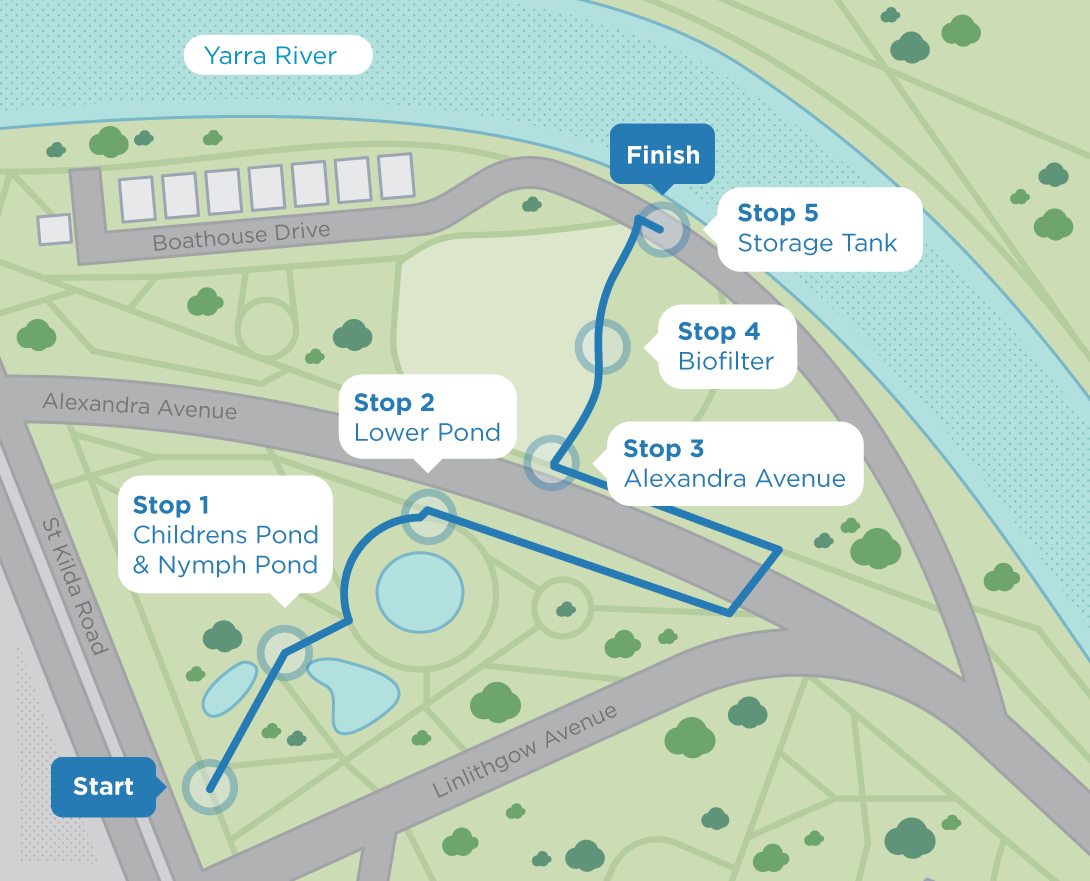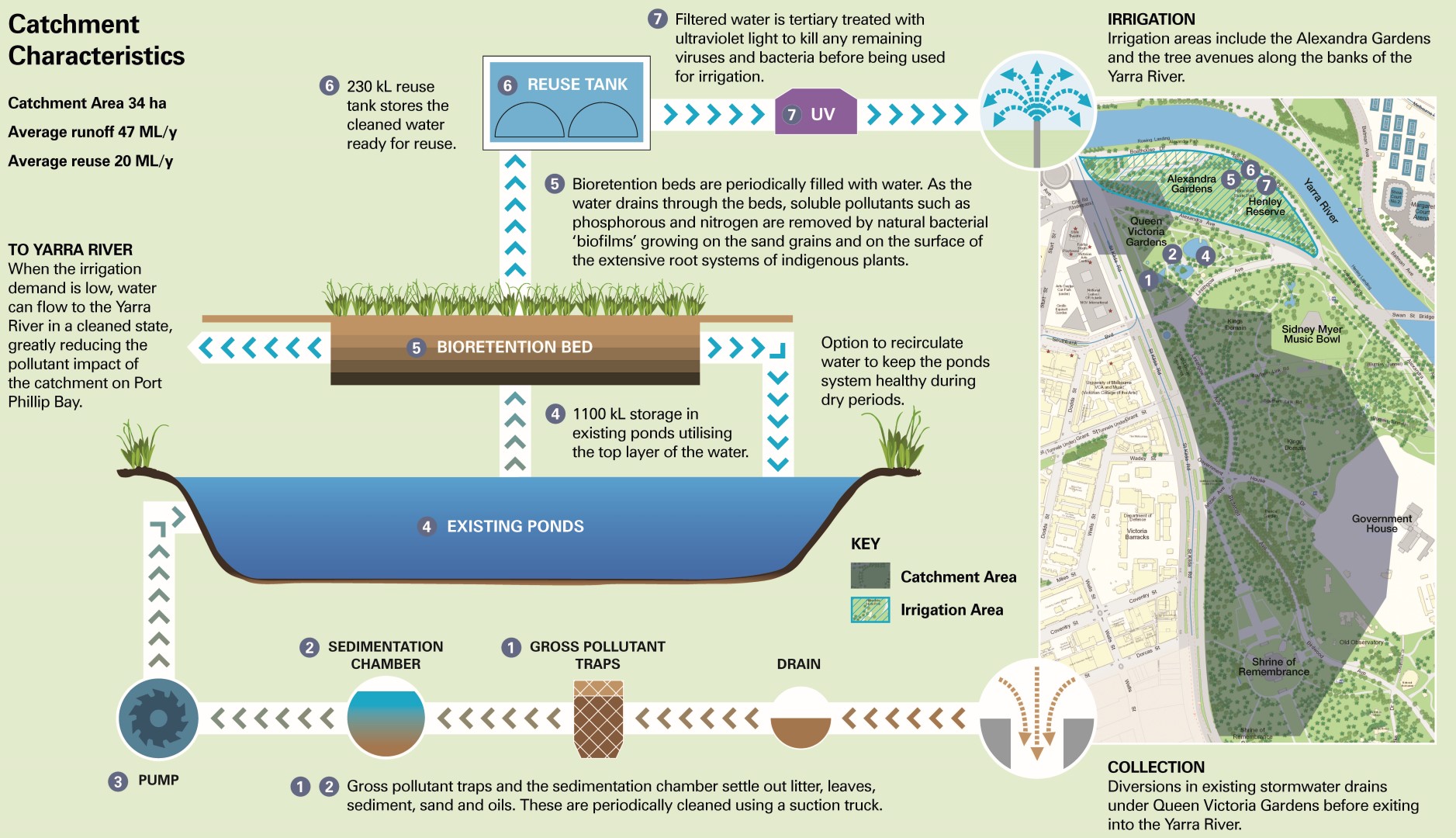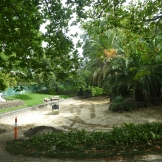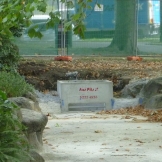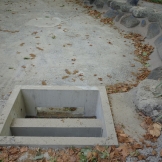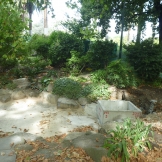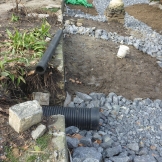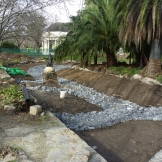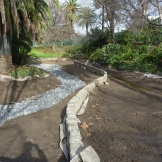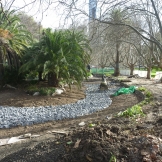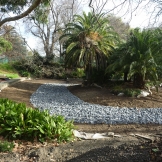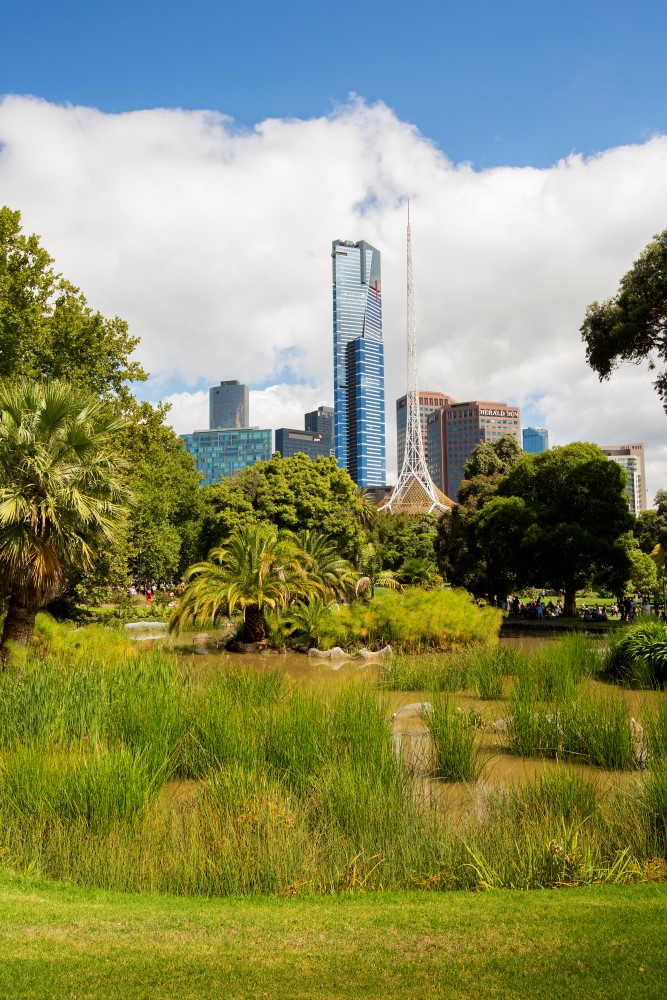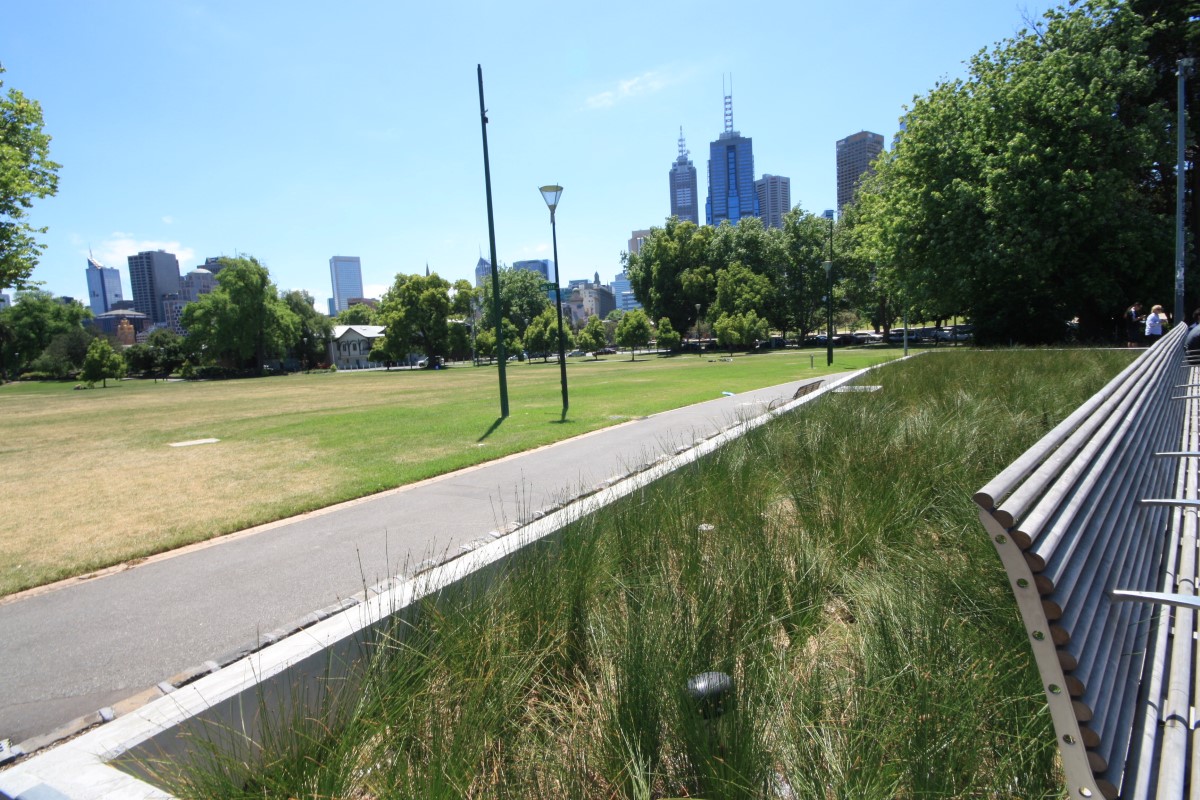You are standing between the Children’s Pond and the Nymph Pond.
Unlike other stormwater harvesting systems in the City of Melbourne, the existing ornamental ponds in Queen Victoria Gardens are used as the primary water storage for this system because the Coode Island silt soil profile was too unstable to support an underground tank storage system.
There are three ornamental ponds that have been retrofitted for stormwater storage, providing a total capacity of 1.1 million litres. Water flows from the diversion system to the first pond, then to the second pond, before entering the third pond.
The ponds each have their own elevation, so the water levels are controlled separately. Each pond also has a maximum draw down level that ensures there is always enough water to prevent algal growth, support healthy plants and maintain the aesthetic value.
The water you can see in these ponds is stormwater that has been diverted from the stormwater drain underneath the grass near St Kilda Road. After the water is diverted from the drain, it passes through a litter trap and a sedimentation chamber, which removes some pollution from the water, such as litter and debris, sand and oils. A pump system transfers the water into the Children’s Pond. These components are buried beneath the grass and can’t be seen.
The first pond, known as the Children’s Pond (closest to St Kilda Road) is shallow and primarily used as additional sedimentation rather than high volume storage. The water level in this pond is controlled by a permanent weir that allows overflow into the second pond. The weir is beneath the pavement where you are standing.
The second pond, known as the Nymph Pond, is 1100m2 in size and is deeper than the Children’s pond. This functions as both storage and treatment, with wetland plants providing aesthetic value and removing nutrients from the water. Similar to a raingarden, the biofilm that forms on the plant stems takes up pollutants, such as nitrogen and phosphorus, cleaning the water.
The top water level of the Nymph Pond is controlled by an overflow weir. The drawdown of water from this pond is generally set to 300mm from the top level, so that there is always enough water to support the plants and keep the ponds looking nice. However it can be varied as required and is controlled by the central control system.
To proceed to the next stop, walk along the length of the Nymph Pond, in the opposite direction to St Kilda Road. Ahead, you will come to the large Lower Pond with the waterfall flowing into it. Walk around the lower pond by following the path either to the left or the right, until you come to the short peninsula jutting out into the pond. This is Stop 2.
